10 Reasons Why Pianists Need to Know Music Theory
Learn the importance of piano music theory and its benefits when studying music, like stronger fluency, structure, creativity, and more.
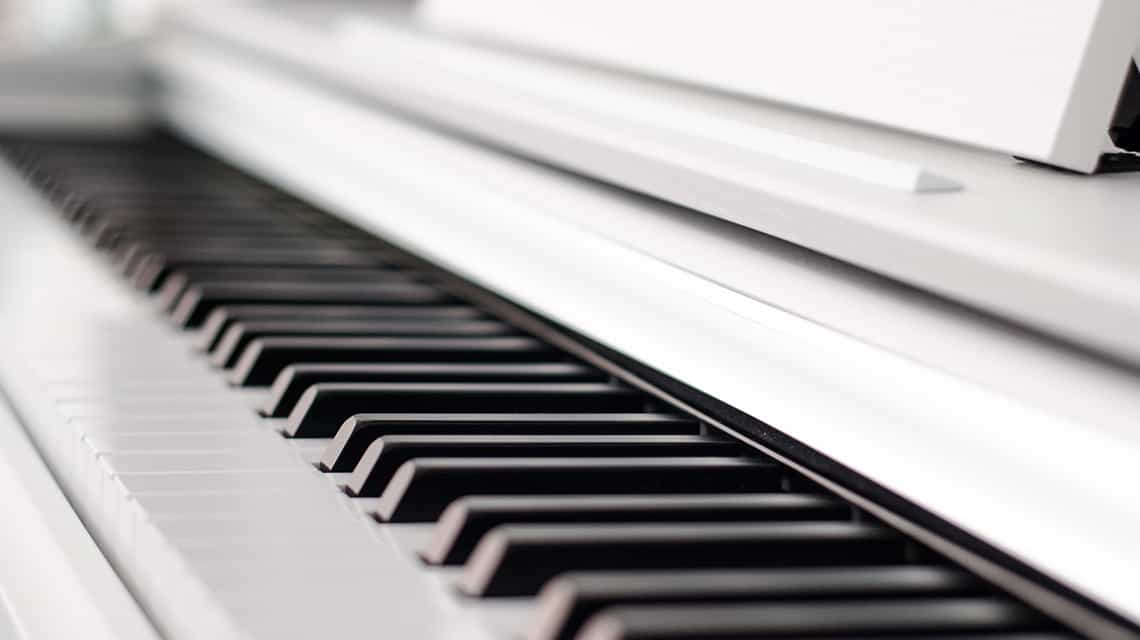
When you’re learning to play the piano, it might seem like studying music theory and understanding chords and scales isn’t that important. A lot of people assume they can skip it. Why bother learning all that stuff if you can already play the piano?
While music theory might get a bad reputation for being a bit boring, it’s actually what all of the music you are playing is made of. And, if you understand some foundational concepts about how music is structured, you’ll have a much easier time learning, playing, and remembering your music.
Believe it or not, once you dive into music theory, you’ll probably discover that it’s pretty exciting! You’ll have all kinds of lightbulb moments as you apply it to music you already play. If you're looking for new music to play, these easy piano arrangements are great for having fun at the piano while improving your music theory and playing skills. Here are ten reasons why you should give music theory a chance.
1. Piano Music Theory Helps You Read and Interpret Your Music Quicker
Imagine reading this article and mentally spelling out every word that you read. W-h-e-n, when. Y-o-u-apostrophe-r-e, you’re, and so on. It would take too long to read, and you’d lose a lot of the meaning of what you’re reading, getting bogged down with letters. This is what happens in music when you approach it note-by-note rather than zooming out and looking each note as a part of a chord.

When you can observe chords in your music, whether they’re blocked, broken, or split between many voices, you can read and play your music far more efficiently. Instead of having to pick out all of the notes in a chord such as C-E-G, you can view the chord as a unit.
Similarly, if you have studied scales, you’ll start noticing that scales and parts of scales show up all the time in music. Being able to identify a scale, and understanding the relationship of the notes as they work together will help your music make much more sense.
2. Understanding Piano Music Theory Will Give You Better Fluency as You Play
Once you start to understand music theory and can relate it to your music, you’ll notice that you can play much more fluently. Chords have very predictable and standard progressions, fingerings, and patterns. If you practice playing chords and chord progressions outside of the context of your music, you’ll start noticing that most music uses simple chord progressions. Transferring your understanding of chords to your music will help you play with better continuity.
Click here to check out 12 songs you can play with only four chords. See if you can pick up on some patterns!
Studying scales will help you to operate within a tonal center as you are learning music. If you ever feel like you’re fighting the key signature of your piece, you probably lack awareness of the scale that it is based on. Also, practicing scales will help you to mentally work within a key, rather than to feel like you have to remember a bunch of random sharps or flats. Those sharps or flats will no longer feel like a cumbersome part of the music. Instead, the music will seem much more logical.
For example, looking at “This Land is Your Land,” below, the piece is written in G Major. If you know the G Major scale, you’ll notice that this piece only uses notes from this scale!
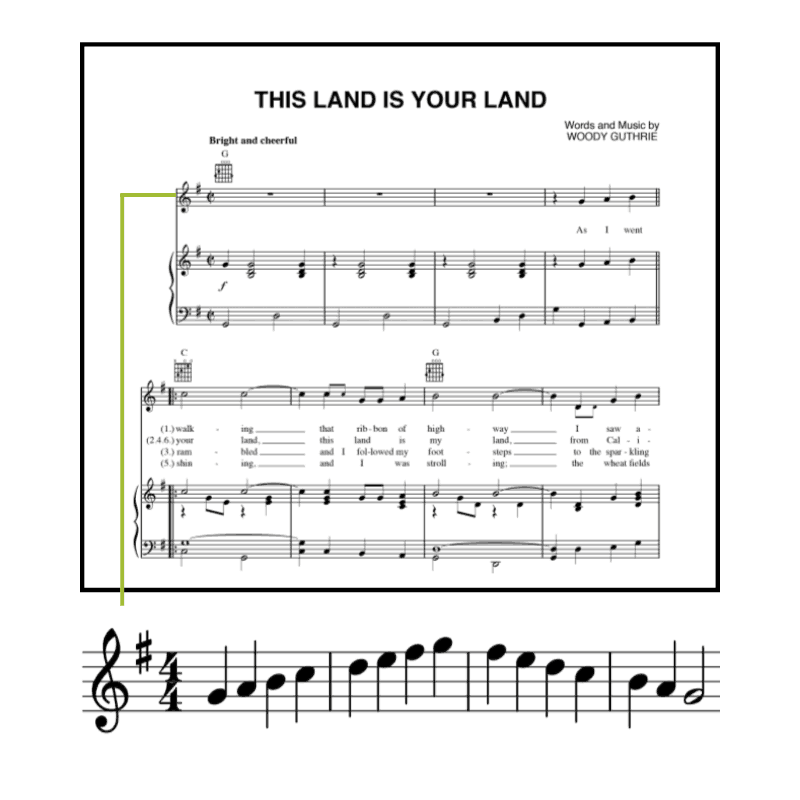
3. Piano Music Theory Helps You See the Structure of Your Music
Without the context of music theory, it might seem like some songs or pieces are just a long string of notes. It might feel overwhelming to keep track of what comes next. When you start to think in terms of chords and chord progressions, you’ll see that many songs are made up of just a handful of chords. Certain chords tend to lead to other chords. If you can observe this, you’ll learn your music quicker and be able to fall back on the knowledge you have to help you move through a piece.
For example, say you’re stuck on the second to last measure of your piece that’s in the key of C Major. See if you can break it apart and spell out a chord among the notes in that measure. You might need to write down all of the notes that are sounding simultaneously, stack them into 3rds, and see if you can recognize a chord from it. If there are notes that don’t seem to belong, they could be neighboring tones or passing tones. If it turns out that the notes you’re having trouble with spell out a G chord, it would make a lot of sense. There’s a good chance that the next measure will have a C chord to finish out the piece. When you’re in the key of C Major, G chords very commonly progress to C chords.
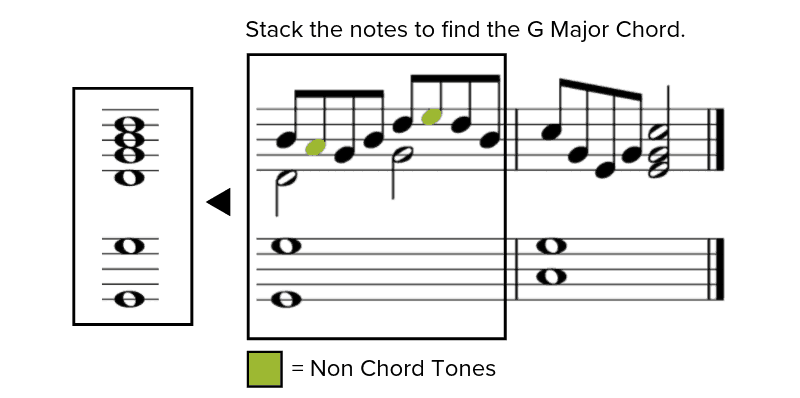
Instead of having to rely on muscle memory or trying just to play what sounds right, you’ll be able to cognitively understand what you’re playing so that you can confidently end your piece or quickly recover if you have a slip-up.
4. A Knowledge of Piano Music Theory Can Help You Be More Creative
Have you ever watched someone improvise at the piano the thought it seemed like they were performing magic? When you’re not grounded in a foundation of music theory, improvisation does seem like magic.
Musicians who can improvise have a clear understanding of music theory. When they are improvising, they are merely pulling musical “tools” out of their “toolbox.” These tools could be scales, modes, modulation, and so much more. They acquired all of these tools by learning about music theory and the relationships between notes and chords.
If you feel like your creativity is stifled at the piano or that you have to rely on written sheet music, spend some time learning the basics of music theory and take what you are learning straight to the piano. With time, you’ll feel more and more comfortable creating your own music and unique sounds. You’ll be able to think through which notes and sounds work well together and which don’t.
5. Understanding Piano Music Theory Makes it Easier to Collaborate With Other Musicians
When musicians are working together, we have to be able to speak a common language. When everyone is on the same page with a basic understanding of music theory, it makes it much easier to communicate and create music together. It is helpful to be able to answer questions like these:
- What key are we in?
- What chord is that in measure 5?
- Why are there so many accidentals in this music?
- What is the form of this piece?
- What is the interval between those 2 notes?
- How do we handle the meter change?
These are all very common questions that musicians deal with on a daily basis. If you can answer these types of questions about your music, you’ll be able to contribute and work efficiently with other musicians.
6. Understanding Piano Music Theory Helps You Identify Intervals
Intervals are the basis of melody and chords; knowing them will enable you to interpret and compose music more efficiently. If individual notes are like letters of the alphabet, intervals are like putting them together as words. Knowing the relationship between notes on the piano will help you train your ears and hear the structure of the chords you play, which will lead you to become a better musician.
An interval in music defines the difference between two pitches.
- Major and Minor intervals are the intervals created by the key signatures in Major or Minor Keys without any added augmentation or diminished tones.
- Perfect Intervals refer to Unison, 4ths, 5ths, and Octaves. These intervals are given the name “Perfect” because they stay the same, whether the key signature is Major or Minor.
- Augmented Intervals are wider by one semitone (half-step) than perfect or major intervals.
- Diminished Intervals are smaller by one semitone (half-step) than perfect or minor intervals.

Ear training will help you to identify these intervals as you listen to them. Check out these interval ear training examples we put together to help you train your ears!
7. Piano Music Theory Helps You Learn Major and Minor Scales
Using the intervals mentioned above, you can build scales. A diatonic scale is a scale with seven pitches that include five whole steps and two half steps. A whole step is a major second interval, and a half step is a minor second interval.

Let’s look at how this formula applies to the keys on a piano.
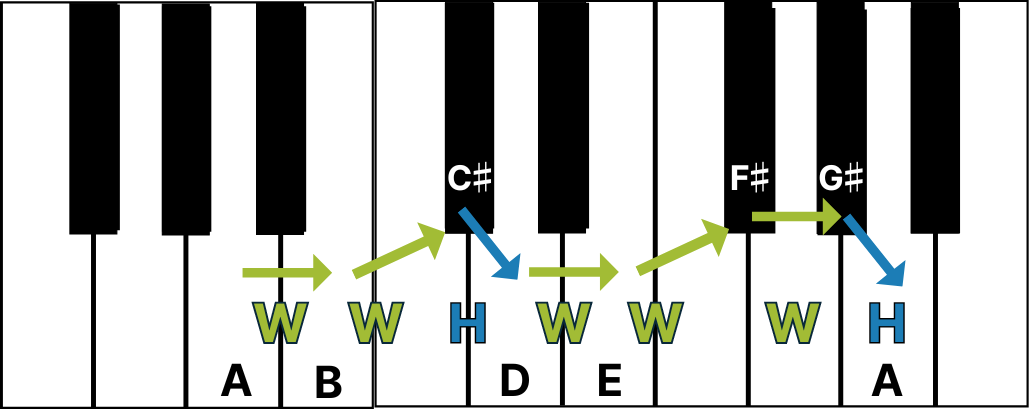
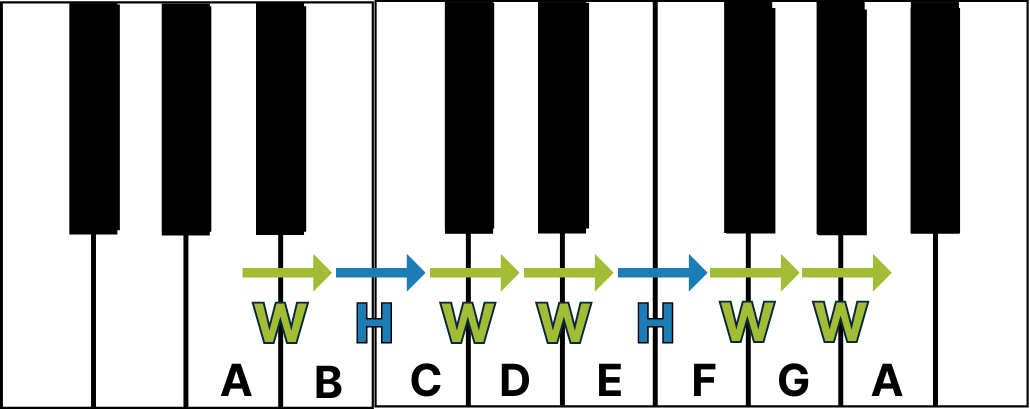
The lower picture features a natural minor scale. There are three types of minor scales commonly found in music composition which you can read about here.
These formulas can help you build scales in any key. With practice, they can become intuitive in your playing, allowing you to move along the keyboard with ease!
8. Understanding Piano Music Theory Will Help You Read Chord Charts and Lead Sheets
Learning to read notation on the staff is a smart approach to learning the piano, but a well-rounded pianist will also learn how to read piano chord charts or lead sheets. They help build piano skills overall, and being able to sight-read chord charts and lead sheets is a wonderful and versatile tool to add to your musical toolbox.
In chord charts and lead sheets, rather than notate an entire chord, a chord symbol will be written above the staff to represent the chord that should be played. Knowing how to build triads and diatonic chords is the most important skill needed to play from a chord chart or lead sheet.
To build a triad, stack the first, third, and fifth scale degrees of a scale. Diatonic chords can be built by making triads on each scale degree.

If you familiarize yourself with chords and practice them, you will be able to take creative liberties in the music you perform and may find it easier to sight-read and improvise!
9. Piano Music Theory Helps You Identify Key Signatures
In your musical journey, you may come across all 30 key signatures, and becoming fluent in piano music theory will help you identify these various keys.
The best way to memorize key signatures, aside from playing pieces in these keys and familiarizing yourself with them, is to memorize the circle of fifths. The circle of fifths is essentially a map of keys. The top of the circle begins with the most common key, C Major, with no sharps or flats in the key signature. As you move clockwise around the circle, you move up an interval of a fifth. The major keys are on the outside and their relative minor keys are on the inside of the circle. With this important tool, you can memorize the key signatures and familiarize yourself with the keys in relation to each other.

The circle of fifths is a great theory tool that helps you figure out the key signature for every major and minor key. It’s also useful for figuring out the chord progressions that work well in a specific key. For example, in C Major, the F Major and G Major chords work well in a piece because they're next door neighbors to C in the circle! You can learn more about the Circle of Fifths and how to use it in our handy article here!
Familiarizing yourself with the key signatures is the first step of being able to identify the key of a piece. As mentioned before, relative major and minor keys share the same key signature, so the next step of knowing the key of a piece is to determine whether the music is major or minor. Listening to the music is the easiest way to know based on the piece’s major or minor qualities. However, in cases where you are not able to listen to the music, there are still ways to tell if it’s major or minor. Start by looking at the first and last notes of the melody. Most commonly, the melody will start and end on the tonic note, or a note in the tonic chord. However, this is not always true, as melodies can start and end on different degrees of the scale, but it is helpful in some cases to help you quickly identify the key.
Another aspect to look at is accidentals. Both major and minor songs can have accidentals, but many times, melodies in a major key will fall into the key signature. With minor keys, there are some commonly used accidentals that you can look out for, such as a raised 6th or 7th scale degree. As you can see, having this background theory knowledge will help you immensely in determining the key of your sheet music.
10. Understanding Piano Music Theory Helps You With Rhythm and Note Values in Relation to Time Signatures
The further you advance in your playing, the more complex rhythms you’ll be introduced to. Not every time signature will have the same rhythm feel as 4/4, and having an understanding of piano music theory will help you play rhythms more intuitively. Being able to internalize and feel the beat of the music starts with practice and knowledge of rhythms and note values in relation to time signatures. This Complete Guide to Time Signatures is a great resource for understanding different time signatures and how they're used.
If you’ve ever been hesitant to learn about music theory, give it a chance! There are many apps and online programs that will walk you through the basics and help you practice what you are learning so that you won’t get overwhelmed. A great place to start is our sheet music reading guide, “How to Read Sheet Music: Step by Step Instructions.” Once you have a grasp on these basic concepts, check out all of our other music theory posts on Musicnotes Now. Learn about the basics, like time signatures, seventh chords, or the circle of fifths. And when you’re ready, tackle some more complex concepts, like modes, secondary dominants, Neapolitan chords, and so much more!
Music theory is very logical and practical. Understanding it will add a new dimension to your music. One of the most beautiful parts of studying music is that it is a perfect balance of artistic expression and mathematical reasoning. If you’re missing out on the mathematical side of music, take a closer look and discover how much depth it can add to your art.
Be sure to visit our website, www.Musicnotes.com or our app to find your next great piece to play!
This post was written by Megan, piano teacher and author of Pianissimo: A Very Piano Blog. Visit her website for more piano related blogs for teachers, parents, students, and all things piano.
Related Products:

